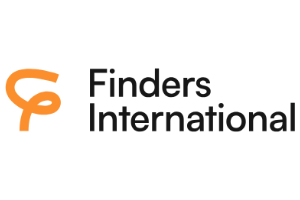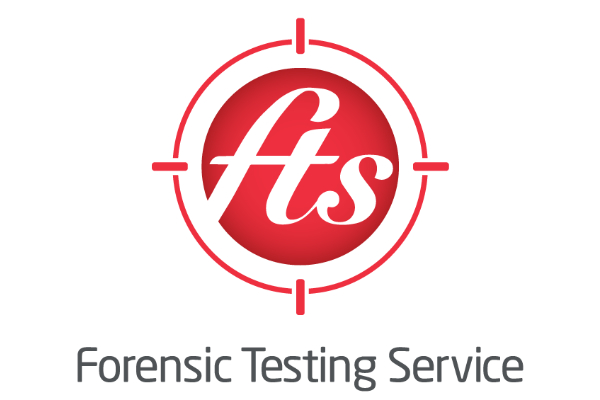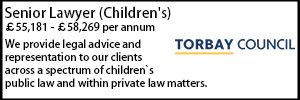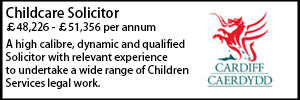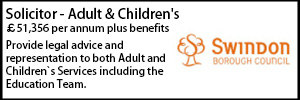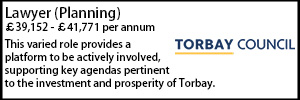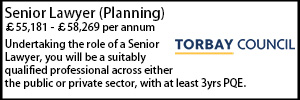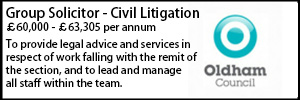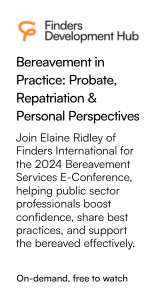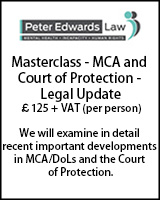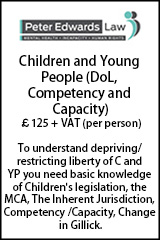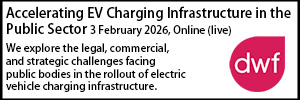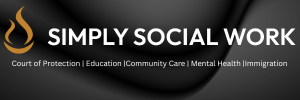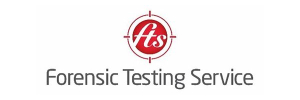A guide to Transparency Orders
- Details
Claudia Saxton provides a simple breakdown guide in relation to transparency orders; who may be granted a transparency order and what may they report on.
The Transparency Pilot started in January 2023 in Leeds, Cardiff and Carlisle. The pilot permitted ‘accredited journalists and legal bloggers to report on what they see and hear in children cases in the family courts’. Across the last two years the pilot has been extended. In January 2024, the pilot extended to a total of 19 areas across the country and in July included private law cases.
Most recently, on 4 November the pilot extended to include public and private law cases in all 19 current pilot areas before Magistrates. On 11 November 2024, the pilot for reporting financial remedy proceedings extended to the Royal Courts of Justice.
Transparency orders
In order for an accredited journalist or legal blogger to report upon a case, the court must grant a transparency order. The court retains the discretion to not make a transparency order and that there should be no reporting of the case. The standard transparency order contains the following terms:
No person may publish any information relating to the proceedings to the public or a section of it, which includes:
- The name or date of birth of any subject child in the case.
- The name of any parent or family member who is a party or who is mentioned in the case, or whose name may lead to the child(ren) being identified;
- The name of any person who is a party to, or intervening in, the proceedings;
- The address of any child or family member;
- The name or address of any foster carer;
- The school/hospital/placement name or address, or any identifying features of a school of the child;
- Photographs or images of the child, their parents, carer or any other identifying person, or any of the locations specified above in conjunction with other information relating to the proceedings;
- The names of any medical professional who is or has been treating any of the children or family member;
- In cases involving alleged sexual abuse, the details of such alleged abuse;
- For the purposes of s.97(2) Children Act 1989, any other information likely to identify the child as a subject child or former subject child.
Unless the Court orders otherwise the following agencies or professionals may be named:
- The local authority/authorities involved in the proceedings;
- The director and assistant director of Children’s Services within the LA (but usually not the social workers working directly with the family, including the Team Manager, unless the Court so orders);
- Senior personnel at Cafcass but not normally the reporting officer, or children’s guardian named in the case;
- Any NHS Trust;
- Court appointed experts;
- Legal representatives and judges;
- Anyone else named in a published judgment
Cases that require special consideration
The court has discretion whether to make a transparency order. The court may also vary the standard terms of the transparency order. When considering this, the court will have careful consideration of the following categories of cases:
- Cases where matters relevant to the case are subject to criminal charges, active investigation, or proceedings, where reporting may cause prejudice to those proceedings;
- Applications that are made without notice, where reporting and or/publication of the hearing or facts would cause prejudice to the applicant.
- Cases where it is particularly difficult to achieve anonymity for the child.
- Cases involving protected parties, and in particular cases where the Official Solicitor acts as a litigation friend.
- FDAC cases, where some where some court appointments are not hearings within the meaning of FPR 27.11.
What documents may the reporters request?
Accredited journalists or legal bloggers who attend a hearing in family proceedings in accordance with FPR r.27.11 or who indicates in advance that they wish to attend a hearing, is entitled to see, quote from, or publish:
- Documents drafted by advocates (or litigants if a party is self-representing), that is:
- Case Summaries,
- Skeleton Arguments,
- Statements of Case,
- Position Statements,
- Threshold Documents and
- Chronologies.
- Any indices from the Court bundle.
- Any suitably anonymised Orders within the case.
The reporter must make their request to see these document at the hearing or before. The author of the report shall then as soon as practicable provide a copy of the document to the pilot reporter.
If a reporter seeks any additional documents, they must request permission of the court.
‘A pilot reporter may share documents or information with their editorial team or legal advisor responsible for the publication of their proposed report of the case, providing that they also provide any such person with a copy of this order which will be binding upon that editorial team or legal advisor.’
Within their report, a pilot reporter may quote from or publish the details of the document save for the details specified above.
Discussions
A pilot reporter may seek to discuss the case with parties to the proceedings and their representatives to understand the circumstances of the case.
‘The parties to the proceedings and their representatives may disclose information from proceedings, and share any hearing dates, with a pilot reporter for the purpose of discussing the case and informing the pilot reporter of the circumstances of the case.
Where the parties or their representatives have invited reporters to attend a hearing, permission is given retrospectively for any discussions that took place with reporters.’
Claudia Saxton is a Consultant Barrister at Unit Chambers.
References
- Draft Transparency Order
- https://www.judiciary.uk/wp-content/uploads/2024/08/Reporting-Pilot-Guidance-2024.pdf
Sponsored articles
How Finders International Supports Council Officers
How hair strand testing should be instructed for family court proceedings
Antisocial Behaviour Legal Officer
Solicitor - Litigation
Regulatory/Litigation Lawyer
Locums
Locums
Poll









